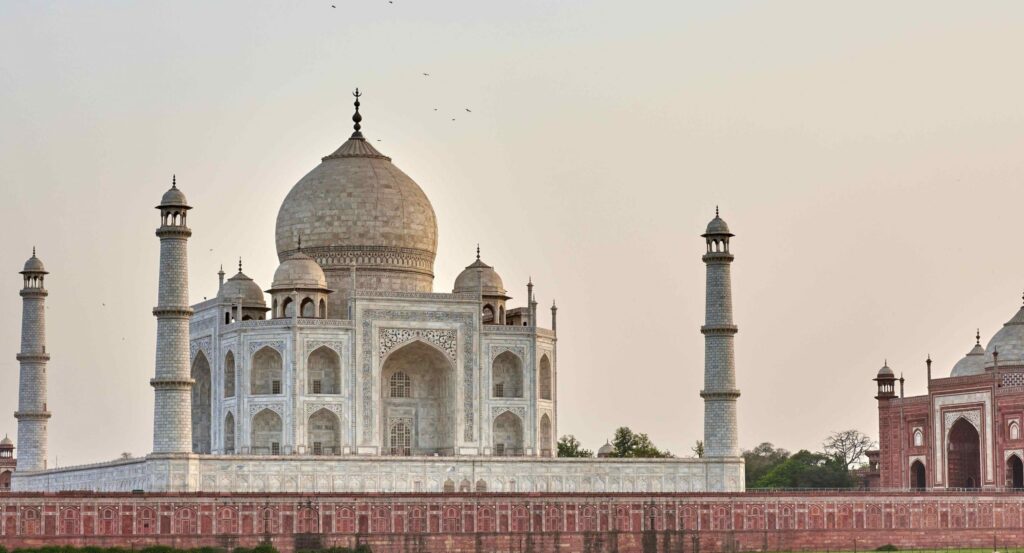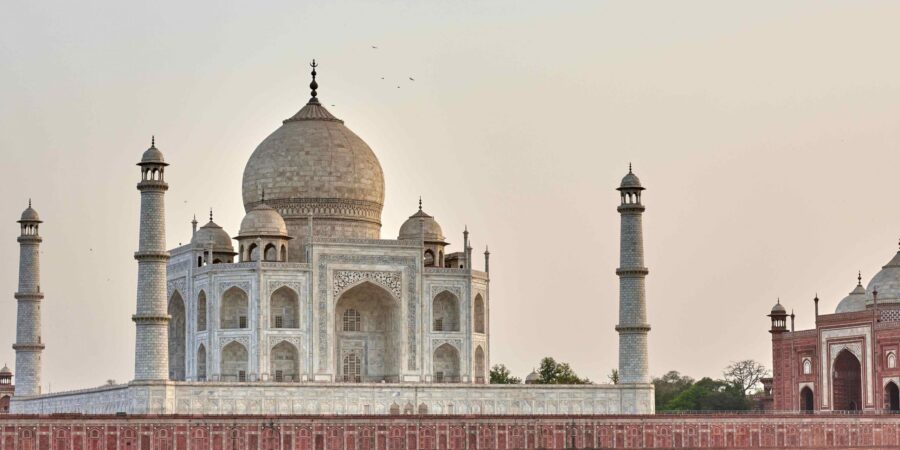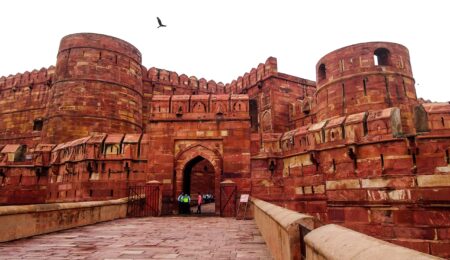 Certain structures have stood the test of time as enduring representations of beauty, devotion, and majesty throughout the annals of human history. The Taj Mahal is the most revered of all, as it is a monument that transcends both time and place, and it is a monument to love that lasts forever. In the city of Agra, which is known for its gorgeous setting, the Taj Mahal, which is located on the banks of the Yamuna River, is a destination that attracts tourists from all over the world who wish to witness its magnificent splendour.
Certain structures have stood the test of time as enduring representations of beauty, devotion, and majesty throughout the annals of human history. The Taj Mahal is the most revered of all, as it is a monument that transcends both time and place, and it is a monument to love that lasts forever. In the city of Agra, which is known for its gorgeous setting, the Taj Mahal, which is located on the banks of the Yamuna River, is a destination that attracts tourists from all over the world who wish to witness its magnificent splendour.
An excursion to the Taj Mahal is comparable to going on a pilgrimage to the very centre of human intellect and invention. This is because the Taj Mahal is such a magnificent structure. The Taj Mahal is more than simply a monument; it is a testament to the enduring power of love. As one approaches the threshold of this architectural marvel, a sense of anticipation begins to rise within the soul with the realisation that the Taj Mahal is more than just a monument.
After entering the towering gate that is commonly referred to as the Darwaza-i-Rauza, tourists are confronted by a vista that is absolutely absolutely stunning. The gate, which is made of sandstone that has been intricately carved and is decorated with arabesques and inscriptions from the Quran, acts as a prelude to the splendour that is located beyond it. As soon as one passes through its magnificent arches, they are immediately transported into a realm of stunning perfection, where each and every element has been painstakingly created to evoke feelings of awe and amazement.
When the visitors emerge from the shade cast by the gate, they are confronted by a sight that cannot be adequately characterised. A huge expanse of verdant vegetation, interrupted by gardens that have been painstakingly manicured and tranquil reflecting lakes that glisten in the sunlight, is in front of them. A sense of harmony and balance is created by the symmetrical layout of the garden, which is divided into quadrants by flowing walkways bordered with fragrant flowers. This plan inspires a sense of equilibrium and harmony that is mirrored in the construction of the Taj Mahal itself.
The distinctive silhouette of the Taj Mahal emerges as one travels through the leafy walkways that crisscross the garden. It arises against the blue sky like a vision from a dream, and it is a sight to behold. The glistening white marble of the mausoleum emanates an ethereal beauty that captivates the soul. It is as if it were cloaked in a shroud of early morning mist or drenched in the golden hues of the sunset sun.
As one gets closer to this architectural wonder, one cannot help but be awed by the meticulous decorations that are adorning every surface of the building. The beautiful marble façade, embellished with delicate floral motifs and elaborate geometric patterns, gives tribute to the extraordinary workmanship of the artisans who laboured ceaselessly to bring Emperor Shah Jahan’s vision to life.
Upon ascending the stairs of the marble platform upon which the Taj Mahal is situated, tourists are welcomed by the sight of the central tomb, which is characterised by its magnificent dome that extends upwards towards the realm of heaven. There is an air of timeless elegance and grace that emanates from the tomb, which is surrounded by four tall minarets that serve as silent sentinels guarding the sacredness of the monument.
When one enters the sacred halls of the Taj Mahal, they are surrounded by a sense of reverence and a sense of peace. The cool marble flooring beneath one’s feet echo with the murmurs of generations past, while shafts of sunlight filter through the latticed screens, casting beautiful patterns of light and shadow across the walls.
The cenotaph of Mumtaz Mahal, the cherished wife of Emperor Shah Jahan and the inspiration behind this magnificent ode to love, may be found at the very centre of the tomb. The cenotaph is carved from a single block of perfect marble, and it is embellished with beautiful inlays of semi-precious stones. These inlays show floral motifs and passages from the Quran that speak of eternal devotion and remembering.
At the moment when tourists stop to pay their respects at the grave of Mumtaz Mahal, they are filled with a sense of solemnity and reverence for the enduring power of love that is not limited by the constraints of time or distance. When one is confronted with such great beauty in this holy place, where the human and the supernatural meet, it is impossible not to experience a tremendous sense of humility.
Visitors are hesitant to tear themselves away from the mesmerising embrace of the Taj Mahal as they emerge from the hallowed chambers of the Taj Mahal. Nevertheless, when they say their goodbyes to this world-famous structure, they take with them memories that will remain in their hearts for the rest of their lives. This is a witness to the enduring legacy of love and beauty that the Taj Mahal embodies.
When it comes down to it, a trip to the Taj Mahal is not just a trip to a historical monument; rather, it is a voyage to the very core of what it is to be human. At the same time as it allows travellers to immerse themselves in the splendour of the past while pondering the eternal truths that connect us all together, it is an experience that transcends the bounds of time and distance. In the moment when the sun is setting over the placid banks of the Yamuna River and laying its golden glow upon the marble walls of the Taj Mahal, one cannot help but experience an overwhelming sense of thankfulness for the privilege to be a witness to such sheer splendour.





